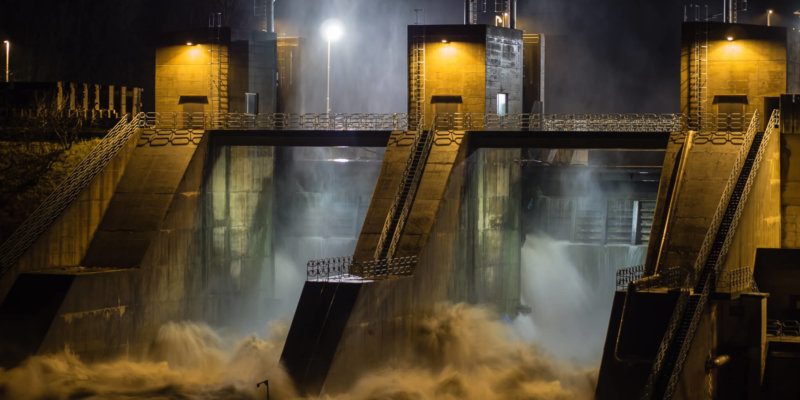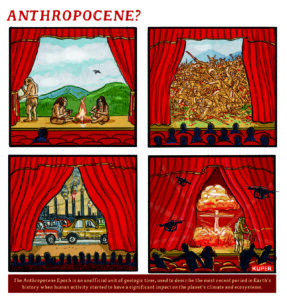Europe Will Pay Dearly for Rising Temperatures
Unrestrained global warming and a hotter climate will cost the continent in lives lost and economies squeezed. Flooded rivers may cost Europe three times more than today. (Jani Brumat / Unsplash)
Flooded rivers may cost Europe three times more than today. (Jani Brumat / Unsplash)
The continent must brace itself for the big heat: a hotter climate will cost Europe dear if average global temperatures soar by 3°C near the end of the century, when heat extremes could claim an additional 132,000 deaths a year.
Labour productivity in some southern European countries could fall by 10 to 15%. As sea levels rise, there could be a five-fold increase in coastal flood damage, to affect more than 2 million people and wreak economic tolls of €60 billion (US$68 bn) a year.
As extremes of rainfall increase, swollen rivers could expose three times as many people to inland flooding, and the damage from river floods could rise from €5.3m a year to €17.5m.
If, on the other hand, the world keeps the promise it made to itself in Paris in 2015, and contains global warming to 2°C or less by the century’s end, coastal flooding – which already affects 100,000 people and costs €1.25 bn a year – will affect only an estimated 436,000 and total €6 bn a year in annual damage.
Grim appraisal
But right now the world is on course to tip 3°C by the century’s end, and a new study by the European Commission’s joint research centre has made a sombre assessment of the likely costs.
There will be significant shifts in the times at which seeds sprout, flowers bloom and crops ripen, with big changes in soil water: this is going to affect agricultural productivity. Europe’s arid climate zone is expected to double in area.
Demand for energy to heat homes and offices is likely to fall, but any gains will be wiped out by a rapid rise in energy demand to cool cities and towns. Northern Europe can expect to get wetter, but some parts of southern Europe will, increasingly, face drought and water shortages.
Some of the forecasts are not new: researchers have repeatedly examined the impact of climate change on European harvests, and of sea level rise, for instance, on European coastal cities.
Terse summary
The latest report, labelled with the acronym Peseta III, presents a wider picture of change. It has been four years in the making, and is the product of consultation with experts in economics, biology, physics and engineering: its opening abstract says it all in three pithy sentences.
“The study assesses how climate change could affect Europe in eleven impact areas. Under a high warming scenario, several climate impacts show a clear geographical north-south divide. Most of the welfare losses, assessed for six impact areas, would be greatly reduced under a 2°C scenario.”
It attempts to put a crude measurement on the consumer cost to Europe’s economic welfare of various levels of possible climate change, and the headline figure is that 3°C warming could impose losses on the European Union nations of 1.9% of gross domestic product, or €240bn a year.
But this is an understatement “because key climate impacts cannot be quantified,” the researchers say. And once again, losses would be considerably lower if warming was contained to within 2°C.
Some winners
Under a lower warming regime, there could even be some benefits: Eastern Europe in particular could expect to see measurably higher agricultural yields, especially of wheat and maize.
In southern Europe, which will be both drier and warmer, yields are expected to decline. Irrigation may not be the answer: the harvest from irrigated fields is likely to start showing a decline by the mid-2030s.
By 2050, crop prices are likely to be depressed by the impacts of climate change. In effect, farmers could expect lower output, and on top of that, lower incomes per unit of output.
And these calculations do not include the direct impact of weather extremes – the heatwaves that shrivel seedlings, the hailstorms and high winds that damage blossom and so on – that are likely to be amplified by overall global warming.
“Under a high warming scenario, several climate impacts show a clear geographical north-south divide. Most of the welfare losses … would be greatly reduced under a 2°C scenario.”
Transport, too, will be at the mercy of ever more intense and more frequent extremes of weather. By the century’s end, 200 airports and 850 seaports – large and small – could be affected by flooding from either rising sea levels or heavier downpours.
And the Mediterranean climate zone – with its unique mix of habitat, ground cover, biodiversity and crops – would become increasingly vulnerable to droughts, fires, pests and invasive alien species.
Labour productivity will fall, especially in the south, and in some places employers might have to plan to shift some work to the cooler night, with the additional costs of chronic fatigue, anxiety and depression associated with night work.
At 3°C, heat extremes could lead to additional deaths per year up to 132,000. But even at 2°C this figure could soar to 58,000 extra deaths per year.
Your support matters…Independent journalism is under threat and overshadowed by heavily funded mainstream media.
You can help level the playing field. Become a member.
Your tax-deductible contribution keeps us digging beneath the headlines to give you thought-provoking, investigative reporting and analysis that unearths what's really happening- without compromise.
Give today to support our courageous, independent journalists.






You need to be a supporter to comment.
There are currently no responses to this article.
Be the first to respond.